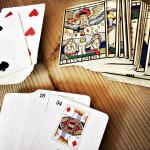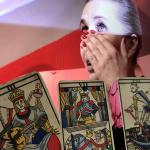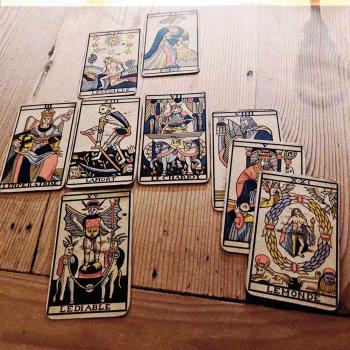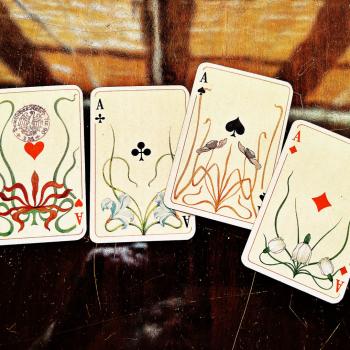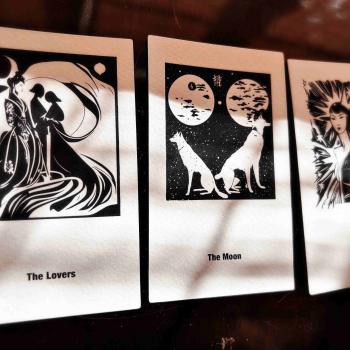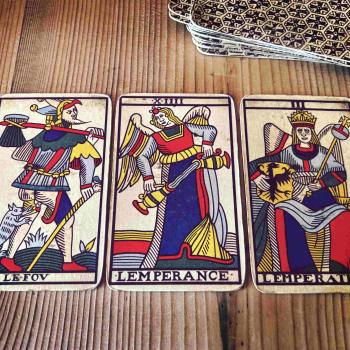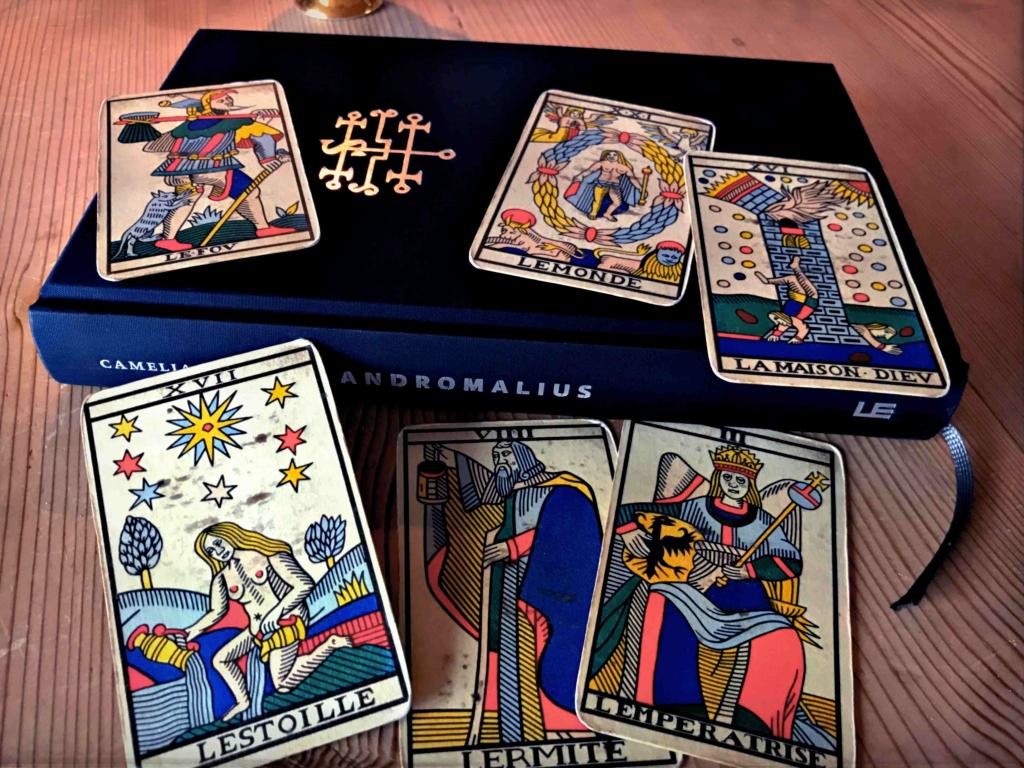
Reading cards occasions not only the delivery of a particular message, but also the thinking about what makes a fortuneteller. As far as I’m concerned, one becomes a fortuneteller because of desire. My theory is often corroborated not only by the simple correlation between epistemological desire – as in the desire to know what you don’t quite know – and passion for spying, but also by the portrayal of fortunetellers in popular culture. For instance, there’s no film or book out there that doesn’t suggest, albeit stereotypically, that the reason why a fortuneteller is good is because of her secret past.
What we also find in this suggestion is the idea that caliber is acquired through the intensity of an illicit love affair, rather than passion for money. But popular culture plays exactly on this tension between the fortuneteller’s secret love, and when that love is denied, her resentment now expressed as cynical greed. This latter image of the fortuneteller turned bad – implicitly because of this failed love led to love of money – is what makes movies that depict the reading of cards dynamic, since merely accepting a reader’s clear insight about a situation is unthinkable. Why? Because no one wants to hear the truth. Hidden secrets are much more entertaining.
As I was reading the cards for the passions of the heart, a line from Oscar Wilde came to my mind: ‘In matters of grave importance, style, not sincerity, is the vital thing.’ With this literary memory in my head, I cast the cards.
A woman wanted to know if the great desire she experienced once upon a time, coming from a man she loved with equal intensity, was still as present for him as it was for her. This is a classic question that always excites me, as it gives me an occasion to ponder precisely on how a reader of caliber incorporates the truth in the cards into a style that’s cultivated against the background of her own desire, the same desire that made her a great reader. Here I have to admit that when I come across portrayals of any fortunetellers, the only thing I always want to know is this: who did she secretly love?
I could give myself as an example, but then as they say, a secret is a secret and it is to be told, not revealed, so let’s just look at my cards here instead, as I want to make a further point about portraits.
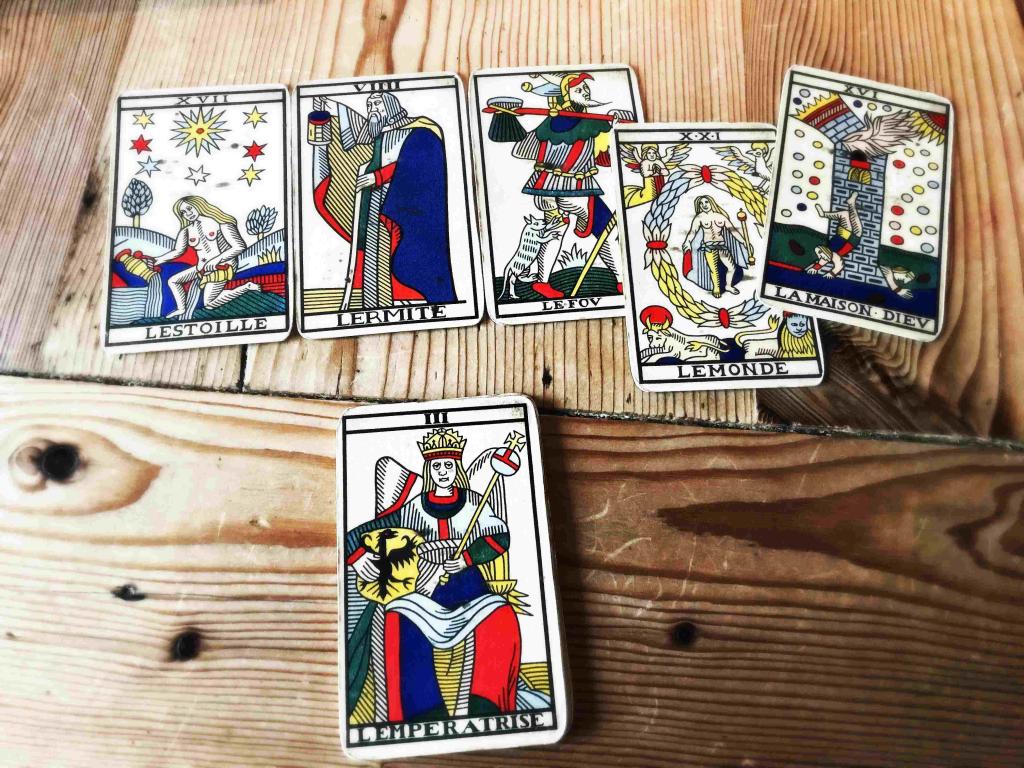
Upon seeing the first three cards, the Star, the Hermit, and the Fool, I went quite nonchalantly: ‘It’s still there. He is still looking at you through some light, lenses or filters, and then even gets an erection.’
‘Oh, but the Fool is turning away from the Star,’ the woman rightly observed, and we pulled another card to see where he was going. The World, with its wide, round opening, was waiting. Sigh.
‘Not so fast,’ I said to the woman. ‘Although it may seem as if your lover looks at you, and because he can’t have you – as Hermits are not into sex – he goes somewhere else for it. But this is not the case.’ The woman now made big eyes. ‘No?’ she suspiciously looked at this card, and then tentatively asked: ‘does this mean that I am the woman in the World card? Does this mean that he comes back to me?’
I had to admit that I had no idea about that, but I did have a suspicion myself regarding the identity of this woman, the embodiment of perfection as far as desire itself is concerned. But I said nothing. I pulled another card and we got the Tower. ‘The woman in the World card is you,’ I said, ‘the one your lover had a falling out with.’ A new sigh was on the table, but this time it was one of relief. ‘So he still wants me,’ she said, without waiting for me to say anything else. I didn’t. I just left it there, and we both looked at the bottom card from the cut deck, the Empress, as this image showed who was in control.
In this case here, it felt reassuring to know that, at least according to the cards, desire was not loose, nor was it finding a new outlet for expression. On this, I did point to the woman that her fear of the other woman, or the potential that another, more available woman now might be in the picture, was unfounded. After all, she didn’t ask anything about that. What she asked was an abstract question, yet quite specific, about desire for her, not for another. I insisted that we thus didn’t mix the narratives unnecessarily.
But here to the point. Although my logic based on what was asked precisely and what the cards delivered in response at the visual level was sound, the woman I was reading the cards for left my office unconvinced. ‘You’re a nasty fortuneteller,’ she said, and I smiled.
Now, what I like about encounters such as these – which are not even that uncommon – is the fact that, besides the reading proper, what else emerges is also the portrait of the fortuneteller as a stylist immersed in an interminable discourse on desire. We act like ‘nasty women’ because we know how desire works. We know about its spells. It is this knowledge of desire that makes us stylists who are able to fashion a subject in exactly the image we transact with. We have the cards as a vehicle for this transaction. And our secret loves.
I’ll stop here with these reflections before they grow into a treatise on desire – in fact, the topic of my next book – but not before I point to the apropos in how we correlate the matters of the heart with stylistic formalism especially when we give in to being in states of possession.
Meanwhile, my latest book, a portrait of the Goetic demon Andromalius, has been launched. In it you’ll find cards, magic, possession and command. In other words, all the stuff that makes dedicated students of magic and cartomancy wonder: ‘who did she secretly love?’
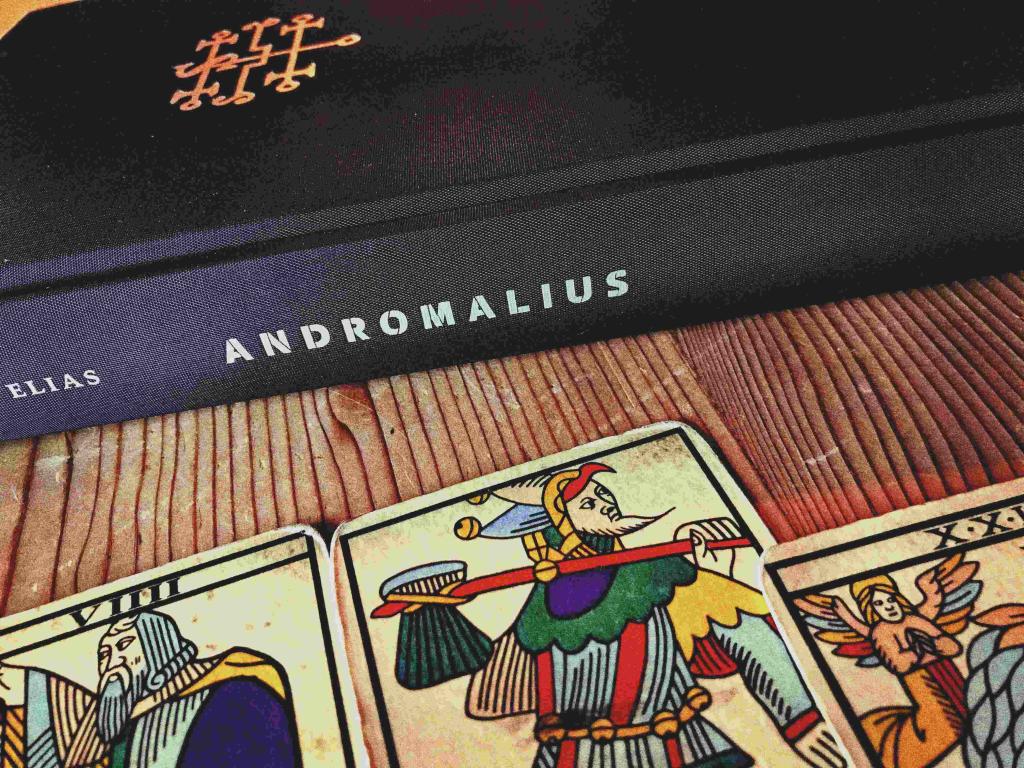
♠
For more such practice with the cards, join the Read like the Devil Practice Club. Visit also Aradia Academy and sign up for the newsletter that will keep you informed on upcoming courses and cartomantic activities. Note the Off the Shelf offering that also includes free resources.


